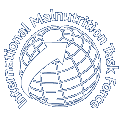Assessing the Impact of the Introduction of the World Health Organization Growth Standards
 Sheila Isanaka, BA, Eduardo Villamor, MD, DrPHa, Susan Shepherd, MDc and Rebecca F. Grais, PhD,
Sheila Isanaka, BA, Eduardo Villamor, MD, DrPHa, Susan Shepherd, MDc and Rebecca F. Grais, PhD,
The World Health Organization standards with the z-score criterion might become a useful tool for the early detection of acute malnutrition in children, although additional research on the resource implications of this transition is required
OBJECTIVE. The objective of our study was to assess the impact of adopting the World Health Organization growth standards and weight-for-height z-score criterion on the response to treatment of severe acute malnutrition in children compared with the use of the National Center for Health Statistics growth reference.
METHODS. We used data from children aged 6 to 59 months with acute malnutrition who were admitted to the Médecins sans Frontières nutrition program in Maradi, Niger, during 2006 (N = 56214). Differences in weight gain, duration of treatment, recovery from malnutrition, mortality, loss to follow-up, and need for inpatient care were compared for severely malnourished children identified according to the National Center for Health Statistics reference and weight-for-height <70% of the median criterion versus the World Health Organization standards and the weight-for-height less than –3 z-score criterion.
RESULTS. A total of 8 times more children (n = 25754) were classified as severely malnourished according to the World Health Organization standards compared with the National Center for Health Statistics reference (n = 2989). Children included according to the World Health Organization standards had shorter durations of treatment, greater rates of recovery, fewer deaths, and less loss to follow-up or need for inpatient care.
CONCLUSIONS. The introduction of the World Health Organization standards with the z-score criterion to identify children for admission into severe acute malnutrition treatment programs would imply the inclusion of children who are younger but have relatively higher weight for height on admission compared with the National Center for Health Statistics reference. These children have fewer medical complications requiring inpatient care and are more likely to experience shorter durations of treatment and lower mortality rates. The World Health Organization standards with the z-score criterion might become a useful tool for the early detection of acute malnutrition in children, although additional research on the resource implications of this transition is required.
Click this link for the full report
